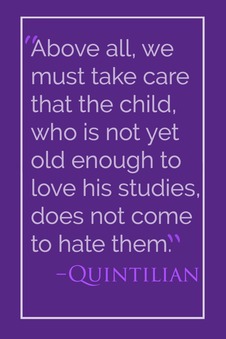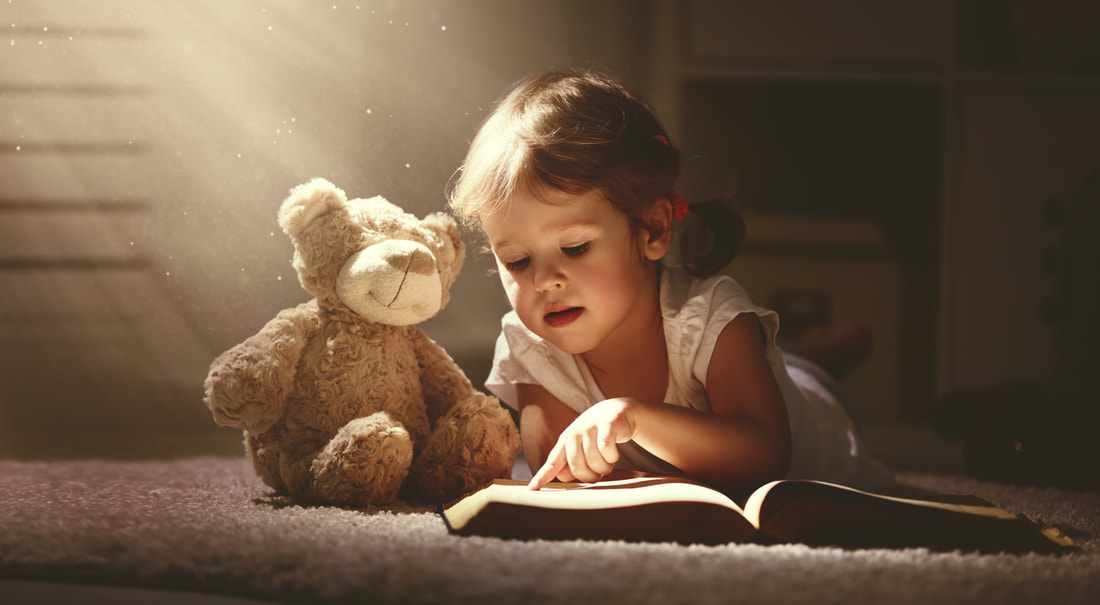
Children at the preschool level should be exposed to literary thought and literary quality, because they are naturally receptive and retentive at this age. What they are exposed to will matter to their entire course of life. The student at this age, should be exposed to an environment rich in literature. There should be alphabet toys and stories everywhere. When he or she holds a pencil, they should be shown how to do so correctly but not forced to sit for hours and work with said pencil. They should be encouraged and praised and helped to love their studies. We want a child to come to know and love words. After all, what matters is how much he or she cares, and how many things they care about.
Our goal is to expand the world in which they know and are familiar with. Children at this age are naturally curious and are eager to know all about the world around them. In preschool, we will help them focus and learn about al the different people in our community that make a difference through books and through visits.
A word about 1/2 day vs. full day preschool:
Preschool aged children are developmentally prepared to learn in an academic setting 3-4 hours a day in 20 minute bursts or increments. Our program takes advantage of this by incorporating play, rest, snack, PE, music and art to fill in the gaps. This allows for a well rounded program that exceeds any child care program in the afternoon. Our learning rich mornings are concentrated when they are fresh, while our afternoons are filled with all the things a child loves, allowing for brain development and spontaneous play fostering neuro-development and promoting later academic success and social skills.
Our goal is to expand the world in which they know and are familiar with. Children at this age are naturally curious and are eager to know all about the world around them. In preschool, we will help them focus and learn about al the different people in our community that make a difference through books and through visits.
A word about 1/2 day vs. full day preschool:
Preschool aged children are developmentally prepared to learn in an academic setting 3-4 hours a day in 20 minute bursts or increments. Our program takes advantage of this by incorporating play, rest, snack, PE, music and art to fill in the gaps. This allows for a well rounded program that exceeds any child care program in the afternoon. Our learning rich mornings are concentrated when they are fresh, while our afternoons are filled with all the things a child loves, allowing for brain development and spontaneous play fostering neuro-development and promoting later academic success and social skills.
Curriculum Used in Pre-School:
|
Science:
Overview of the Areas of Sciences Studied The following areas of science will be studied with discovery and observation throughout the year. Each unit contains 4 weeks’ worth of material to study. Unit 1: Exploring the World Around Me Unit 2: Exploring Water Unit 3: Exploring Air Unit 4: Exploring Weather Unit 5: Exploring Plants Unit 6: Exploring the Earth Unit 7: Exploring Chemistry Unit 8: Exploring Sound Unit 9: Exploring Motion Language Arts: Your ABC's!
First and Foremost, Always great Literature Students are read to every day as classrooms work their way through the top 100 picture books over the past century as well as begin exploring at least one chapter book a month. Overview of the Areas of Language Arts Studied Preschool students will learn these skills: The five vowels and their short sounds The 21 consonants and their sounds The long sounds of the five vowels Blend a consonant and vowel together (19 consonants) Sound one- and two-vowel words These phonics rules: c/k rule: k goes with i and e; c goes with the other three, a, o, and u When c and k come together we say the sound only once s can say “s“ or “z“ q is always followed by u; vowel sound students hear will not be short u, but sound of vowel which follows u When a word ends in a double consonant, we say its sound only once One- and two-vowel words phonetical Apply phonics concepts to reading Blends One- and two-vowel words Simple sentences and stories Learn sight words the, a, and I Learn purpose of a story title Learn that words ending in ’s are possessive Know to: Capitalize letters at beginning of sentences Place period at end of sentences Apply phonics concepts through abundant guided and independent practice activities including: Letter picture recognition and association Blend and word association with picture Sound recognition Dictation for developing sound recognition and spelling application Will Write: Pre-Kindergartners love to “write like Mom and Dad.“ Your child will practice tracing and then writing all of the lowercase letters and 12 capital letters in cursive. By the end of the year, he or she will be writing blends, words and their own first name! Chapter Books that will be explored as a class in PreK will include.....My Teacher and Me
A Letter from your Teacher First Day Jitters Alexander and the Terrible, Horrible, No Good, Very Bad Day We Don't Eat our Classmates Our Class is a Family The Wonkey Donkey The Kissing Hand Chicka Chicka Boom Boom Daniel Goes to School Llama Llama Misses Momma Pete the Cat and the Surprise Teacher Pout Pout Fish If You Give A Dog A Donut If You Give A Pig A Party Polar Bear Polar Bear What Do You Hear? Don't Let the Pigeon Drive the Bus Duckling Gets a Cookie The Very Hungry Caterpillar The Monsters on the Bus Peppa Pigs Class Trip We Are in a Book There is a Bird on your Head |
Social Studies: Community Helpers
What better time to learn about who there is in our world than when our world is still a magical place! This year your student will learn about the following community helpers. Each helper will be covered for approximately 2-3 weeks. Order taught subject to visitor availability. Unit 1: What is aCommunity Unit 2: Pastor Unit 3: Firefighters Unit 4: Police Officer Unit 5: Teacher Unit 6: Doctor Unit 7: Nurses Unit 8: Dentist Unit 9: Farmer Unit 10: Baker Unit 11: Servers Uit 12: Mayor Unit 12: Vererinarian Unit 13: Salesperson Unit 14: Postal Employees Mathematics: Your 123's!
The Lab school of Oklahoma uses Saxon math for it's core math instruction. We believe each student is unique and teach to the individual. Therefore, we supplement with Math-U-See to integrate a more hands on approach with those who would benefit. For more information on Saxon math, please visit our "About Us" page. Overview of the Areas covered in Preschool Math: Counts by 1's, 5's,and 10's Counts sets of objects Reads and writes numbers to 31 Counts sets of objects Compares and orders numbers to 20 Identifies most, fewest, more, less Identifies the digits in a number Identifies ordinal position to fourth Identifies doubles Uses concrete and pictorial models for addition and subtraction Uses concrete and pictorial models for multiplication and division Acts out story problems Divides a set of objects by sharing Identifies half of a whole Divides a shape or solid in half Names and represents fractional parts of a whole Identifies and counts pennies Identifies and counts nickels Identifies and counts dimes Shows an amount of money using coins Pays for items using coins Writes money amounts using a $ sign or a ¢ sign Geometry and Spatial Sense: Identifies left and right Identifies, reads, and extends repeating and continuing shape patterns Identifies common geometric shapes Sorts common geometric shapes Makes and covers designs using pattern blocks Makes and covers designs using tangrams Makes and copies designs on a geoboard Identifies congruent shapes and designs Makes and draws congruent shapes and designs Identifies similar shapes Measurement: Identifies the appropriate metric or customary unit of measure to use Compares and Orders objects by length Measures using non-standard units Mass, Volume: Compares the weight of objects Compares and estimates the capacity of containers Identifies and uses measuring cups and spoons Identifies quart Perimeter and Area: Compares the size of shapes Orders objects by size Time and Calendar: Identifies the day of the week, month, date, and year Identifies days of the week and months of the year Identifies seasons Reads and represents time to the hour Statistics and Probability: Identifies a sorting rule Organizes and compares data Creates and reads a real graph Creates and reads a pictograph Problem Solving: Acts out, draws pictures, and writes number sentences to solve story problems Solves spatial problems |

